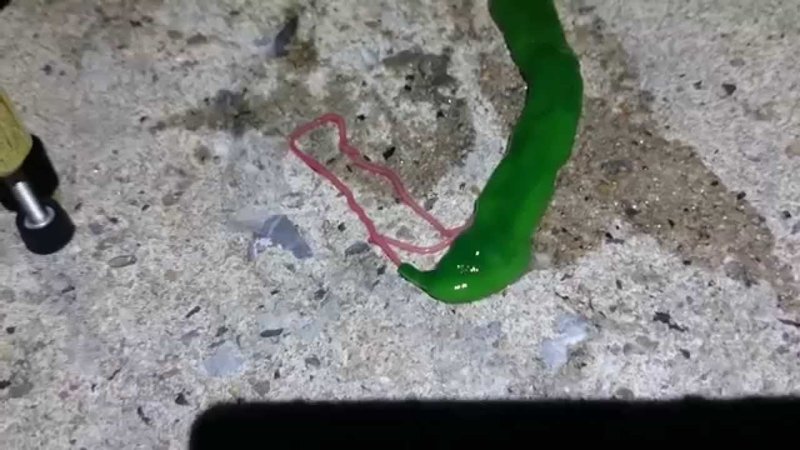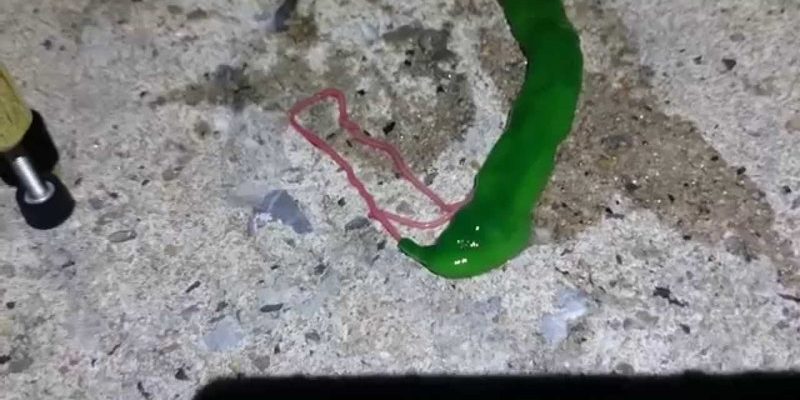
Let’s dive deeper into how ribbon worms use their sticky slime to snatch meals and what makes this method so effective. From their anatomical features to the science behind the slime, you’ll get a clear picture of how these squiggly creatures survive in their habitats. Plus, it’s not just about catching food; it’s also about understanding a remarkable adaptation in the natural world.
What Are Ribbon Worms?
Ribbon worms, or nemerteans, belong to a fascinating group of animals that live mostly in marine environments. They can be found in various shapes and colors, with some species measuring over 30 feet long! That’s roughly the size of a small whale but made up mostly of soft tissue. They’re often confused with earthworms due to their elongated shapes, but ribbon worms have some cool adaptations that set them apart.
One of the most striking features of ribbon worms is their proboscis. This is a long, tube-like structure they can extend to capture prey. Think of it like a superhero’s grappling hook—when they spot something tasty, they shoot out their proboscis at lightning speed to grab it. This feature allows them to catch prey quickly and efficiently, making them effective hunters.
How Do Ribbon Worms Use Their Sticky Slime?
Here’s the kicker: ribbon worms don’t just use their proboscis alone. They’ve got a secret weapon in their arsenal—sticky slime. This slime helps them to ensnare prey, making it difficult for the captured creature to escape. Picture a fly getting caught in a spider’s web; it’s a similar concept, except ribbon worms use their slime more like a fishing lure.
When the ribbon worm extends its proboscis, it secretes this sticky substance, which can trap smaller fish, crustaceans, and even other worms. The slime immobilizes the prey, making it easier for the worm to pull it in and enjoy a meal. This method allows them to hunt efficiently, even in environments where other predators might struggle.
The Secret Behind the Slime
You might be wondering what makes this slime so effective. The secret lies in its composition. Ribbon worms produce a mucous-like substance containing proteins and other compounds that give it that sticky texture. When the slime comes into contact with water, it expands and becomes increasingly viscous, enhancing its ability to trap unsuspecting prey.
Moreover, the elasticity of the slime plays a huge role in its effectiveness. Ribbon worms can create a wide surface area, allowing them to cover more ground and catch more prey. Imagine you’re trying to catch fish using a net. The larger the net, the better your chances—same goes for the slime!
Locating Prey: The Ribbon Worm’s Strategy
Ribbon worms are typically found buried in sand or hiding among seaweed, which helps them ambush unsuspecting prey. Their camouflage skills are impressive, making them hard to spot. When they sense a potential meal nearby—thanks to sensory cells on their body—they spring into action.
The strategy can be likened to a cat stalking its prey. They don’t rush in blindly; instead, they wait patiently until the moment is right. Once they’ve locked onto a target, they launch their proboscis to deliver the sticky slime and secure their meal. This patient hunting technique is part of what makes ribbon worms so successful in their niche.
Why This Matters in the Ecosystem
Understanding how ribbon worms capture prey helps us appreciate their role in the ecosystem. As ambush predators, they contribute to the balance of marine life by controlling populations of smaller creatures. By keeping these populations in check, ribbon worms play a vital part in maintaining healthy aquatic communities.
Furthermore, their slime might hold clues for scientific advancements. Researchers are studying the composition of ribbon worm slime to explore potential applications in medicine or materials science. Who knows? This gooey substance might inspire the next big thing in biotechnology!
Comparing Ribbon Worms to Other Predators
It’s interesting to compare ribbon worms to other marine predators, like octopuses and anglerfish. Both are known for their unique hunting techniques. Octopuses rely on their intelligence and dexterity, using their arms to capture prey, while anglerfish use a bioluminescent lure to attract unsuspecting fish.
In contrast, ribbon worms employ patience, slime, and stealth. Each method has its own strengths and weaknesses, tailored to the specific challenges faced within their environments. This variety illustrates how diverse and adaptive life can be, even among creatures that share the same habitat.
The Fascination Behind Ribbon Worms
Honestly, ribbon worms may not get the spotlight they deserve, but they’re worth the attention. Their unique hunting techniques, anatomical features, and ecological roles make them a captivating subject in the study of marine biology. When you think about how they capture prey with sticky slime, it’s hard not to be amazed by the creativity of nature.
As we continue to explore the mysteries of the animal kingdom, ribbon worms remind us that there’s always something new to learn. Who would have thought that such simple creatures could have such complex and effective hunting strategies?
In conclusion, ribbon worms are extraordinary in their own right. From their sticky slime to their clever hunting techniques, they showcase the wonders of evolution and adaptation. Understanding these creatures not only enriches our knowledge but also deepens our appreciation for biodiversity and the interconnectedness of life in our oceans. Next time you spot a slimy sea creature, think of the incredible strategies it might be using to survive.

